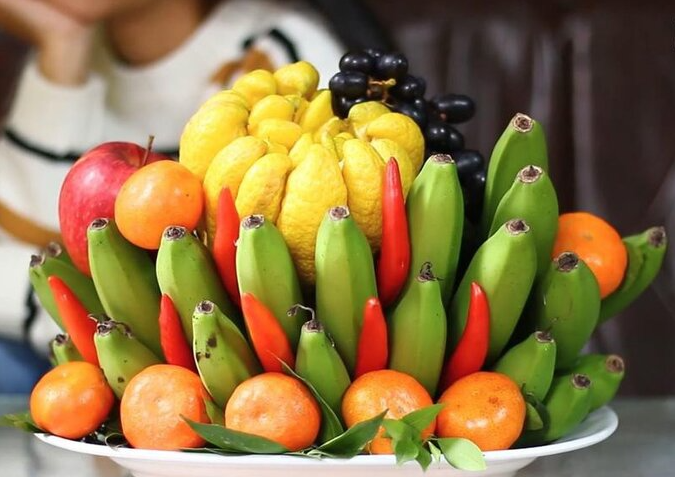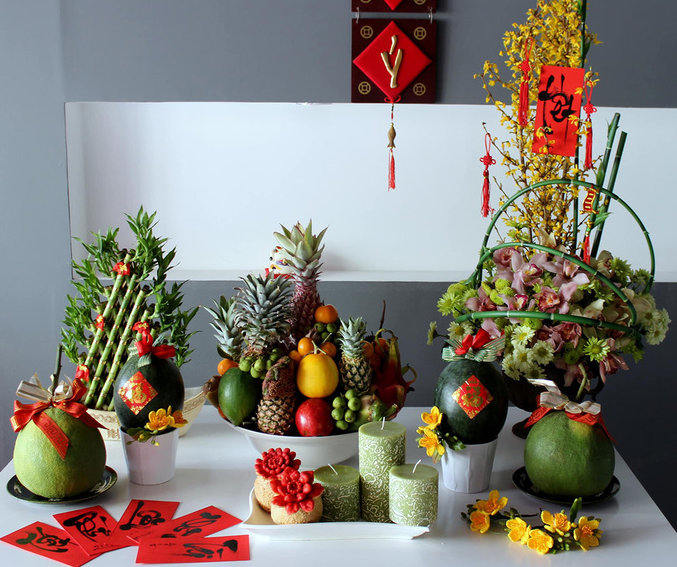 |
| The Northern five fruit tray. (Photo: VN Express) |
The five-fruit tray is an essential offering to the ancestors during Tet, a traditional Vietnamese custom that has been passed down for generations. It consists of five different types of fruit, symbolizing the desires and devotion of the Vietnamese people to their roots. The number five holds significance as it represents the five elements corresponding to human destiny. The odd number signifies positive spirit, making it ideal for the tray as it represents “recreation” and growth.
Additionally, the number five also represents the desire to welcome five blessings into the household, including wealth, social status, longevity, health, and peace. The choices of fruits for the tray vary between the North and the South, influenced by climate, geography, and perception.
In the North, the five-fruit tray typically includes a bunch of green bananas representing Wood, yellow grapefruit or fingered citron representing Earth, red pepper representing Fire, peaches or pears representing Metal, and black grapes representing Water. The Northern people avoid fruits with unpleasant fragrances, thorns, or rough skins to avoid bad luck. The fruits are displayed in odd numbers, with the bunch of green bananas being the most important as it represents protection and blessings from Buddha. When buying the bananas, housewives choose a bunch with long fruits pointing upward.
 |
| The Southern five fruit tray. (Photo: VN Express) |
In contrast, the Southern region pays less attention to the number and color of fruits but chooses fruits based on their names. All decorations are in pairs. The Southern five-fruit tray typically includes custard-apple, fig, coconut, papaya, and mango, representing the desire to earn enough for a living. A pineapple may also be added to express the wish for stability and a large family.
In Central Vietnam, the five-fruit tray is often displayed in a simpler manner. The tray can include any kind of fruit, as the locals believe that the sincerity of the house owner is what matters. The fruit tray on the altar during Tet in the different regions serves the same purpose: to show appreciation to the ancestors and wish for a favorable and lucky New Year.



